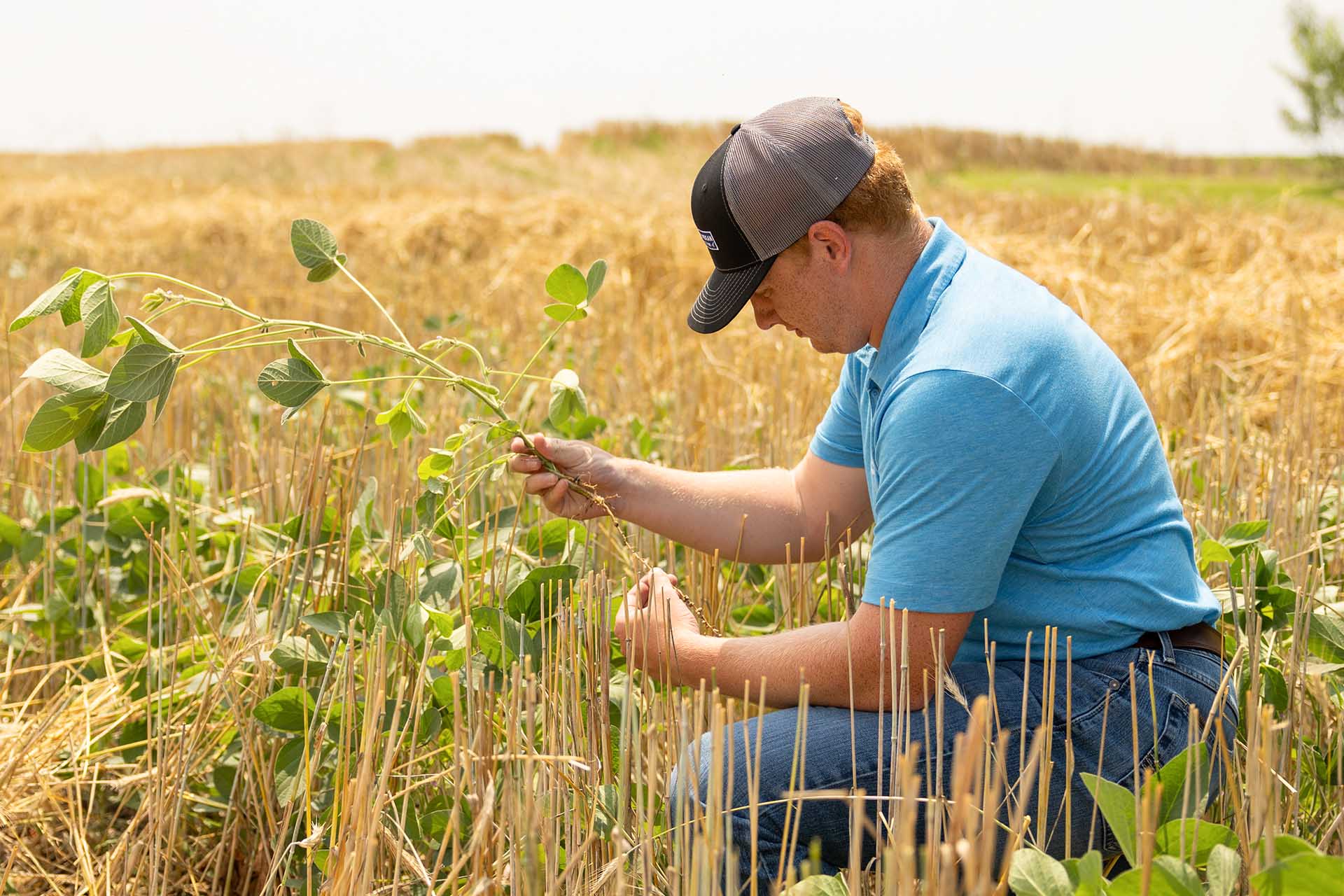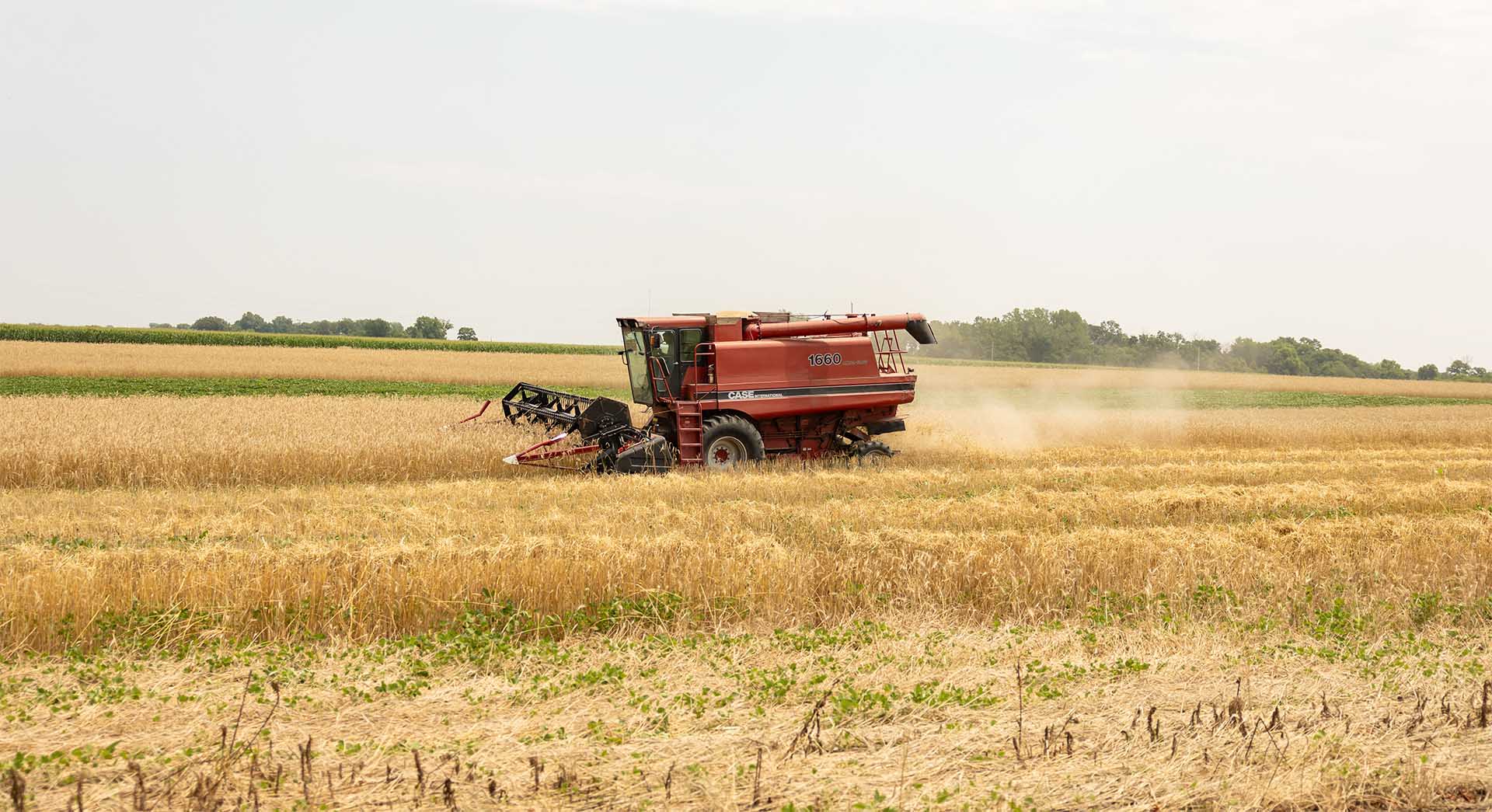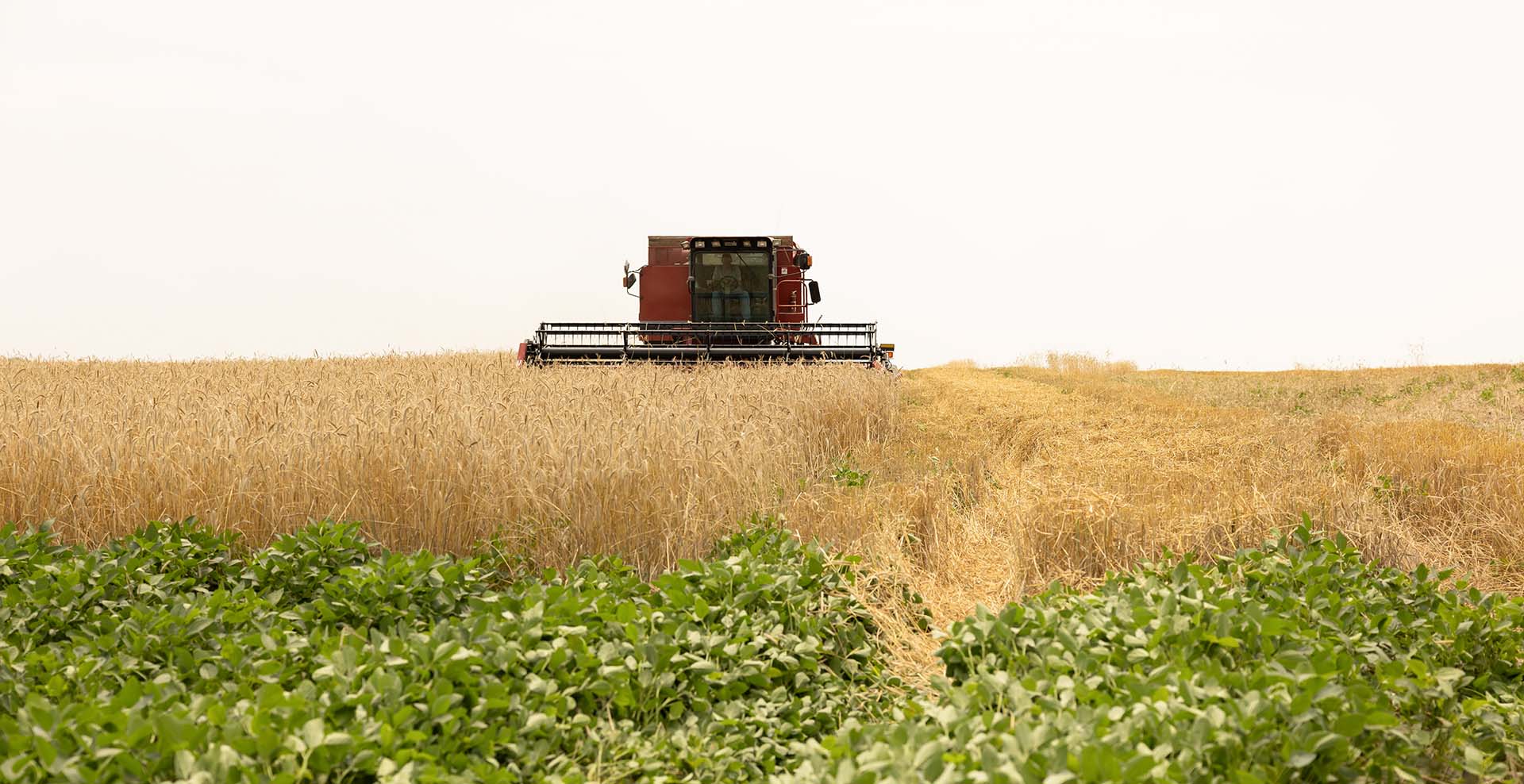
(Photo: Iowa Soybean Association / Joclyn Bushman)
A July harvest
July 25, 2024 | Kriss Nelson
Throughout the eight relay cropping trials, the harvest of small grains began last week and Iowa Soybean Association research agronomists are optimistic this year could be a successful year for the trials.
Relay cropping is the practice of planting soybeans in the spring into cereal rye seeded in the fall. The soybeans grow together with the rye, and when the rye reaches maturity, it is harvested above the canopy of the soybeans growing below. The soybeans then proceed to maturity, generating two grain crops in the same year.
ISA Research Agronomist Alex Schaffer assisted fellow ISA Research Agronomist Lucas De Bruin and his family with their third year of a relay cropping trial on their farm near Oskaloosa.

Cereal rye harvest took place in mid-July and De Bruin says they were pleased with how the cereal rye yielded.
“On average, our cereal rye yielded 40 bushels to the acre,” says De Bruin. “We have heard other yields of upper-20s and 30s. We are hearing a lot of positive feedback at this point of the trials.”
This year the De. Bruins drilled their cereal rye at an angle last fall on 7 1/2-inch row spacings, coming in this spring planting soybeans on 30-inch rows.
The weather has been agreeable for a relay cropping situation, helping to develop a bumper cereal rye crop and aiding in soybean growth.
“We are optimistic about our soybean crop,” says De Bruin. “We have had plenty of moisture to help everything. The soybeans don’t seem to have any issues with competing with the rye. The soybeans are looking the best they have in any other of our relay cropping trial years.”
The warm beginning to spring didn’t favor all relay cropping plans. According to Schaffer, if farmers missed the early soybean planting window this year, the growing rye would have been vulnerable to damage from the planter pass during later soybean planting.
“Relay cropping is a high-management, high-risk practice,” says Schaffer. “Conditions must be right for a timely soybean planting and being able to get the cereal rye harvested timely is also important.”

Striving for environmental and economic influence
ISA continues to support Iowa soybean farmers in relay cropping trials to better understand the environmental and economic impact the practice can have.
This year, Schaffer says Iowa State University’s Iowa Learning Farms, thanks to a Conservation Innovation Grant, will conduct soil health and water quality studies on each relay cropping trial for three years.
“Monthly water samples are being taken, and yearly soil samples will be taken to better understand the effects of relay cropping on water quality and soil health on those acres versus sole soybean crops,” says Schaffer.
Diversification on the farm could provide an economic boost. In this case, relay cropping provides the opportunity to capitalize on harvesting two marketable crops.

Most farmers taking part in relay cropping trials are doing so to produce cereal rye as their cover crop seed, which is the case for De Bruin.
“Relay cropping allows us to raise our cover crop seed without taking any acres out of corn or soybean production,” says De Bruin. “We can keep our cropping rotations and it helps to supply us with the cereal rye seed we will need.”
After the rye was harvested, the De Bruins conducted their first post-emergence herbicide application. Reduced herbicide requirements are an advantage of relay cropping as it allows for skipping the pre-emergent herbicide application, often only requiring one post-emergent herbicide application.
To learn more about relay cropping trials, contact Schaffer at aschaffer@iasoybeans.com or 815-274-2998.
Back